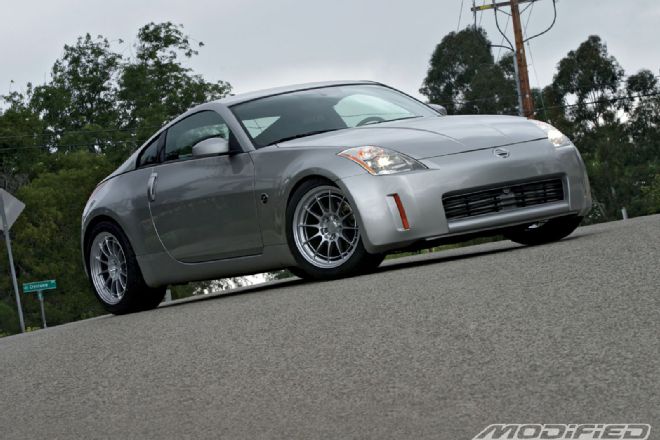We all dream about building what we’d like to call the ultimate street car—obscene horsepower, daily driveability, every creature comfort imaginable, show-stopping looks and undeniable track prowess. Unfortunately, few of us ever come to this reality. The fine line between street car, show car and track assassin doesn’t come easily, if ever, and those of us who started with these grandiose dreams typically end up with a car hugely lopsided toward, track, show or completely inept in any capacity. This is exactly why we brought another Nissan into our project car stable, even though we already have one, as well as an Infiniti G35.
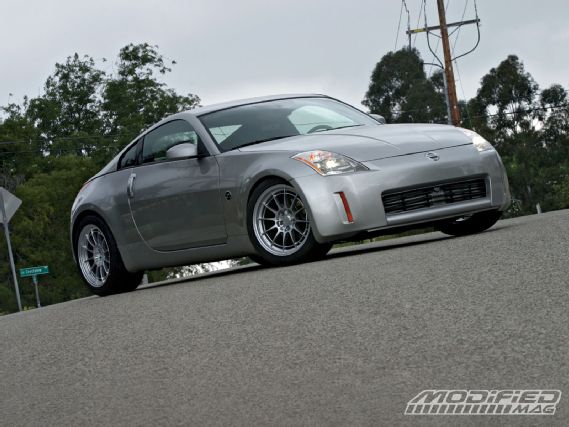 |
Project Nissan 350Z Twin Turbo - The Best Of Both Worlds
|
Project Nissan 350Z Twin Turbo - The Best Of Both Worlds
This Z will be different, though. Instead of burning up our project car tech installments in search of power like most other projects, we’ll save you the wait. Our time attack Z already comes with power—more than we really know what to do with. As it sits right now, our Z currently sports a Nismo suspension, antiroll bars, a 1.5-way KAAZ Super LSD and a Borla exhaust. And what started out as a Vortech supercharged engine has now been replaced with a built low-compression motor fed by a Jim Wolf Technology (JWT) twin-turbo kit and valvetrain that put down more power than two non-slick tires were ever meant to hold. In our case, the JWT turbo kit is of the BB700 variety, which consists of two Garrett GT28RS turbos (better known as “Disco Potatoes”) bolted onto their standard kit. The BB stands for “ball bearing” and 700 is the amount of power this setup can make.
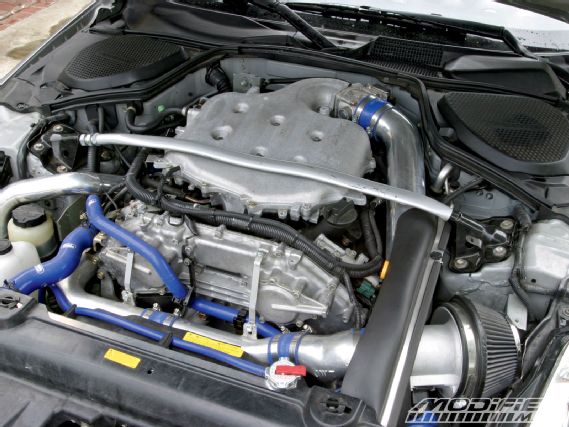 |
Project Nissan 350Z Twin Turbo - The Best Of Both Worlds
|
Project Nissan 350Z Twin Turbo - The Best Of Both Worlds
But having the hardware to make big power is only half the story. The impressive part of our JWT turbo kit is the way it’s managed. The fuel system has been upgraded with 555cc/min Bosch injectors, a 4:1 rising rate in-tank fuel pressure regulator (so that it retains the OEM returnless fuel design), a Walbro 255-lph high-pressure fuel pump and an oversized 3.5-inch mass air flow meter, that’s all controlled by a JWT custom-tuned ECU. This eliminates the need for any piggyback engine management and allows the car, cams and anything else that was connected to the ECU to run as if it came from the factory with this much power. That’s a power claim that few cars can boast about while still being able to start up, idle or respond as smoothly as our Z.
So just how much power are we talking about? At less than 14 psi of peak boost and on pump gas, the JWT kit puts down 548 ft-lbs of torque and 519 whp. At high boost and on race gas, that figure skyrockets to 640 whp and 653 ft-lbs of torque. If we hadn’t already hit the limits of our fuel system, MAF meter and exhaust flow, the engine and turbos could still make more power. But there is such a thing as having too much power, especially when there are only two drive wheels. Just in low boost mode, the rear tires will light up on boost through third gear. This might be fun on the street, but it will be a serious issue in tight track corners because we can’t put the power down.
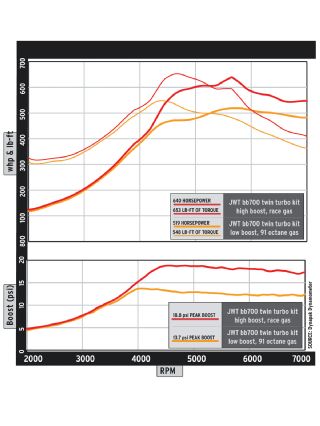 |
Project Time Attack Nissan 350Z
|
Project Time Attack Nissan 350Z
As it stands, we have a really fast street car with severe traction issues. In order to make it fast, we’ll have to find some way to get more grip in the corners, in a straight line and able to survive the track, which is where this project car tech series will be all about. We’ll spend the time to properly set-up a fast car with minimal compromises to driveability or reliability and none of the excessive race parts a street car doesn’t need. To prove it, we’ve decided to throw the finished car in our Super Lap Battle time attack as a Street class contender. This means it has to have a full interior and 180 UTQG or higher tires.
Obviously, the first step to more traction is more tire. The car’s original 18x9 front and 18x9.5 rear wheels were already maxed out with the non-staggered 275-width tires. It also had a tendency for high-speed oversteer, so we replaced the old wheels with new Enkei NT03+Ms in an 18x9.5 +27mm offset in front and 18x10.5 +30mm offset in back. This will let us comfortably run a 275- and 300-plus width tire front and rear, respectively, which will still fit inside the stock Z fenders. In addition to its light weight and track-appropriate strength, the cast NT03+M also comes with two valve stems on each wheel for easier nitrogen filling and more accurate tire pressure adjustments. We shod the wheels with Nitto’s new NT05 max-grip summer tire (see Tire Review, June ’09) in a 275/35R18 up front and 295/35R18 in rear. Although we’d like to have even wider tires in back, the current size offering limited us to a 295mm width. But this is already almost an inch more rear tire. The sizes are also a near perfect match for the original Z tire diameters, which means that our ABS and traction controls will still be able to function properly.
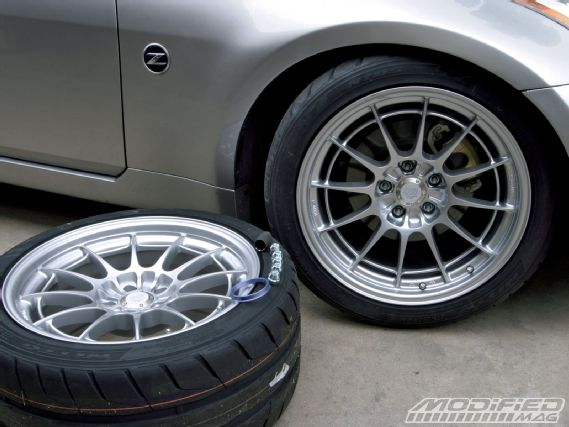 |
Project Nissan 350Z Twin Turbo - The Best Of Both Worlds
|
Project Nissan 350Z Twin Turbo - The Best Of Both Worlds
We saved ourselves the headache of mounting, balancing and schlepping around four massive wheels and tires by ordering the entire package through Discount Tire Direct (DTD), the online branch of Discount Tire. With a simple phone call, the DTD guys were able special order our odd-sized wheels, help pick the right size tires and help us verify if our fitment would work. The package came mounted, balanced and shipped in discrete protective covers. They were even able to provide the right hub-centric ring and lug nut hardware we needed so that mounting the wheels was something we just did at home without the frantic spacer, centering ring or lug nut hunt.
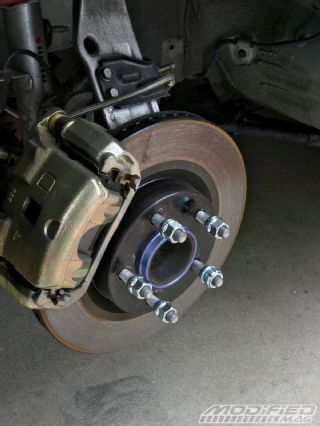 |
Project Nissan 350Z Twin Turbo - The Best Of Both Worlds
|
Project Nissan 350Z Twin Turbo - The Best Of Both Worlds

